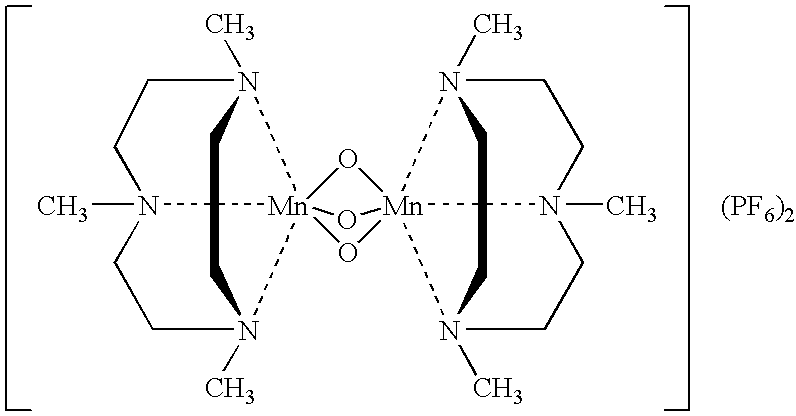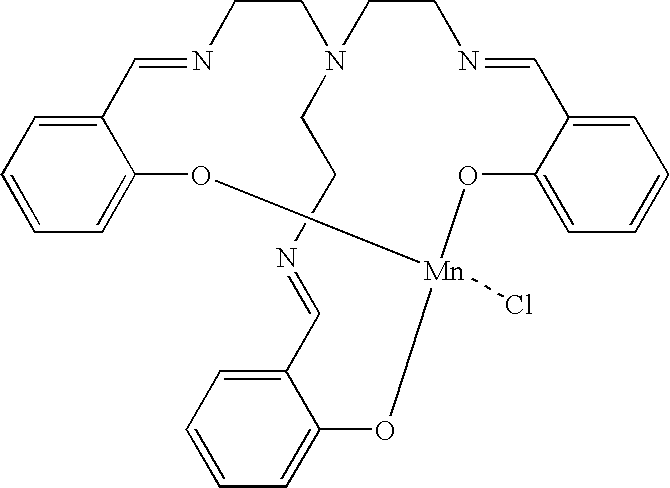Bleach composition and bleaching detergent composition
a technology of bleaching detergent and composition, which is applied in the direction of detergent compounding agents, metal/metal-oxide/metal-hydroxide catalysts, physical/chemical process catalysts, etc., can solve the problems of bleaching power inferior to oxygen-base bleach, discoloration of colored clothes, thinning and holed clothes, etc., to suppress the damage and coloration of clothes, high bleaching power, and the effect of dye discoloration
- Summary
- Abstract
- Description
- Claims
- Application Information
AI Technical Summary
Benefits of technology
Problems solved by technology
Method used
Image
Examples
examples 114 to 158
Tablet Bleaching Detergent Composition
[0342] 0.1 Part by mass of propylene glycol was sprayed to 91.4 parts by mass of each of the bleaching detergent compositions of the above-mentioned Examples 69 to 113, and successively 1.5 parts by mass of fine powder type A zeolite was added to be mixed for 30 seconds. Further, 7 parts by mass of ARBOCEL TF30HG (RettenMaiyer Co.) as a disintegrating agent was added to be mixed for 30 seconds, and a pre-compression molding mixture was obtained. The pre-compression molding mixture was tableted under conditions in which the packing amount of the pre-compression molding mixture was 20.0 g+0.1 g, preload was 1 kN, real pressure was 4 to 6 kN, the revolution of a rotor was 22 rpm, tableting capacity was 600 tablets / min and tableting temperature was 25° C., by a rotary tablet machine which was equipped with 27 pieces of tableting molds (planar shape: round type, and shape at side face: planar rim angle) with a diameter of 34 mm, to obtain the table...
PUM
| Property | Measurement | Unit |
|---|---|---|
| Percent by mass | aaaaa | aaaaa |
| Percent by mass | aaaaa | aaaaa |
| Percent by mass | aaaaa | aaaaa |
Abstract
Description
Claims
Application Information
 Login to View More
Login to View More - R&D
- Intellectual Property
- Life Sciences
- Materials
- Tech Scout
- Unparalleled Data Quality
- Higher Quality Content
- 60% Fewer Hallucinations
Browse by: Latest US Patents, China's latest patents, Technical Efficacy Thesaurus, Application Domain, Technology Topic, Popular Technical Reports.
© 2025 PatSnap. All rights reserved.Legal|Privacy policy|Modern Slavery Act Transparency Statement|Sitemap|About US| Contact US: help@patsnap.com



